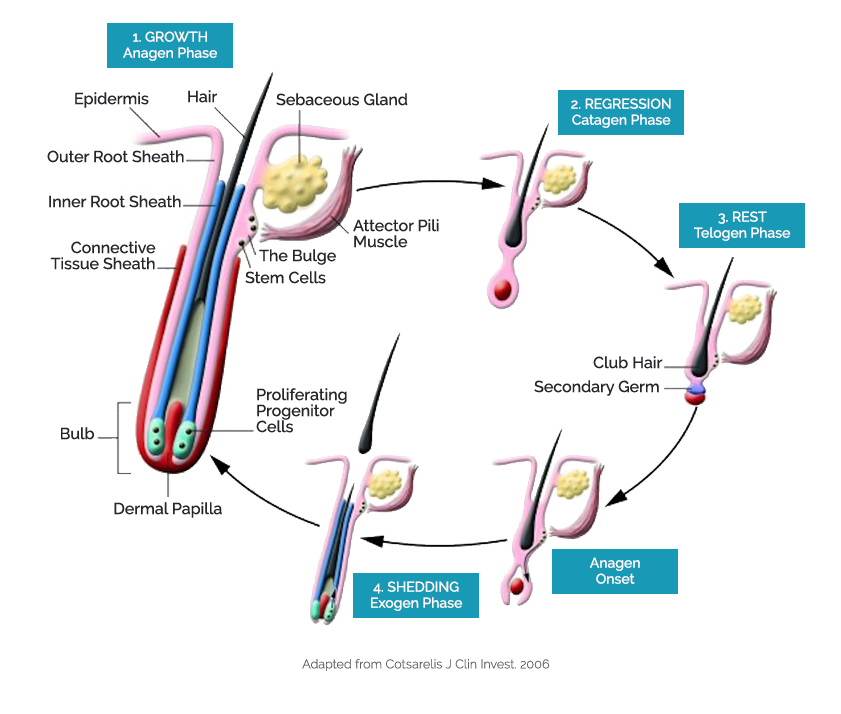Hair Follicle and Dermal Structure
Hair is a derivative of the epidermis and consistsof two distinct parts: the follicle and the hair shaft. The follicle is the essential unit for the generation of the hair shaft. Hair follicle morphogenesis occurs only once during fetal development. Hair follicles develop shafts through a continuous cyclic process.
Humans have approximately 5 million hair follicles across the body, most of which produce vellus hairs (short, weak and barely noticeable). A subset of hairs become terminal, which are thick, strong and pigmented such as eyebrows, eyelashes, beard and scalp hair. Between 100,000 – 150,000 hair follicles reside on the scalp.

Hair Growth Cycle

The hair cycle consists of four phases:
1. Growth (anagen) 2. Regression (catagen) 3. Rest (telogen) 4. Shedding (exogen)
Normal human hair cycles every 2-6 years. The cycle is controlled by the Dermal Papilla (DP) and the proliferating progenitor cells (also called Epithelial Stem Cells) located in the bulb at the bottom of the hair follicle. The DP produce molecular signals that initiate the proliferating progenitor cells into the anagen phase. Melanocytes provide pigment to the hair shaft during the anagen phase. The follicle enters the catagen phase when the DP down-regulates production of molecular signals.
Telogen (rest) phase is of critical importance to instigate the next anagen cycle and produce a new hair shaft. This phase plays a key role in gradual hair loss experienced from Androgenic Alopecia (male and female pattern balding) where various modulatory agents, such as androgens, prolactin and thyroid hormones are believed to lengthen the telogen phase and disrupt the transition to anagen.
Science Papers
Stemson-Recommended Publications
What’s the way to true follicle regeneration?
Only Stemson Therapeutics has developed a proprietary method for generating de novo follicles. Find out about this revolutionary new technology.
Learn More
